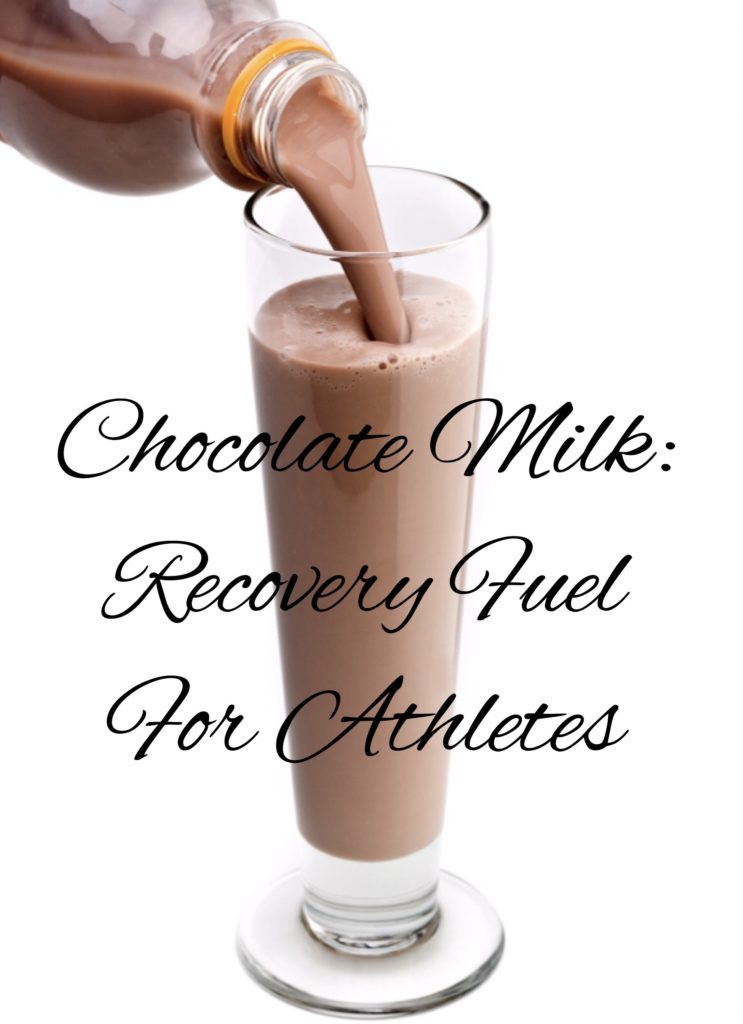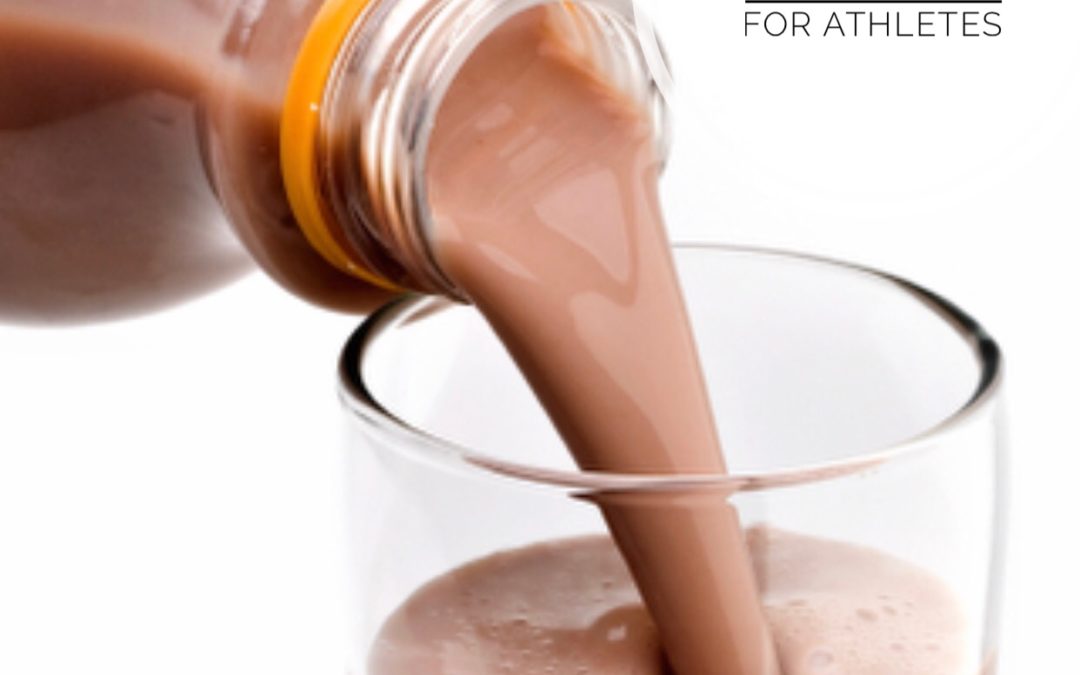
Have you heard the buzz about refueling with chocolate milk?
It’s not new news. In fact, I first wrote about chocolate milk for recovery back in 2012. At that time, the research supporting its use as a valuable recovery beverage was continuing to grow. I was recommending it to the athletes that I worked with and was excited by the promising results. As the news about chocolate milk as a recovery beverage grew, the beverage started to become mainstream. It wasn’t just young athletes using it for recovery; collegiate and professional athletes were, too. The news was out that chocolate milk has a ratio of carbohydrates to protein comparable to that in many commercial recovery beverages, and provides fluids and sodium to aid in post-workout recovery.
Just recently, another study investigating the benefits of chocolate milk for recovery was published. This study was unique and got my attention. It was the first of its kind to focus solely on adolescent athletes and strength development. Researchers found significant strength gains in the high school athletes who recovered with low-fat chocolate milk (about 16 oz.) as part of an intense five-week training program, compared to those given a typically-available sports drink (about 24 oz.) that had no protein but the same amount of carbs. I was so excited to see this. I decided it was time to update that 2012 post.
Recovery Fuel Nutrition
Before I dive into the milk, let me first explain what and why certain nutrients are recommended after a hard workout. If you’ve read my book, Fueling Young Athletes, or my post about what to eat before a workout, you know that starting exercise with glycogen filled muscles is key to exercise performance. That’s because your body used those fuel stores to get you through your workout. Depending on your type and intensity of training, your muscles can also break down a bit. The breakdown is a normal and necessary part of building new muscle tissues. After exhaustive exercise, it’s time to start the next process – recover and rebuild.
Consuming carbohydrates and protein after exercise does just that. The glucose you get from eating carbohydrates goes to refill your muscles with glycogen, getting them back to your pre-exercise state, and ready to go on with your day. The protein provides the amino acid needed to repair and build muscle tissue.
Why Chocolate Milk For Recovery?
Now, let me share why chocolate milk is an athlete’s best friend. Chocolate milk contains a ~3:1 ratio of carbohydrate to protein – an ideal amount for recovery. It’s not only the ratio that matters, though. It’s the amount, too. Twelve ounces provides ~38 grams of carbohydrate and ~ 12 grams of protein.
Research has shown that athletes who drank chocolate milk post-exercise were able to workout longer and/or harder during their next session.
It has other nutrients that athletes need, too. Milk contains nine essential nutrients, including calcium and vitamin D. Those two nutrients are essential for bone health, as having adequate amounts helps to restore lost calcium and decrease the risk of stress fractures. It also provides B-vitamins, sodium, potassium, magnesium and vitamin A. The best part, though, is that you get all of that from consuming just one food – chocolate milk!

Milk and Your Muscles
Recovery nutrition is all about refueling muscles fast. That’s another reason chocolate milk is ideal. Milk naturally contains sugar, and the additional sugar found in chocolate milk provides more glucose, getting you closer to the ideal carbohydrate:protein ratio I mentioned above. I do want to mention that not all athletes need to rush to recover. Recovery nutrition is the most important for athletes that have multiple exercise sessions in the same day, especially if they are within 8 hours.
The protein found in milk is a combination of quick absorbing whey protein, and the slower absorbing casein protein. That protein combination means you have amino acids available quickly, as well as in the hours post-activity.
Research has shown that the combination of carbohydrates and protein in chocolate milk results in enhanced muscle synthesis, less exercise-induced muscle damage and greater gains in muscle. And, some evidence shows that it is more in gaining muscle tone, than a carbohydrate-only drink alone.
Restoring Fluid and Electrolytes
There’s more. Chocolate milk is a liquid, so it also helps to replenish fluids that were lost during activity. And, it provides important electrolytes lost through sweat. That means it also helps to restore and maintain normal hydration status.
Additional Benefits
There’s more good news, too. Chocolate milk is cost effective, highly portable and is make with very basic ingredients. You can buy it in bulk or purchase shelf-stable varieties to keep in your gym or book bag.
One last thing, it tastes good, too!
Do you drink chocolate milk for recovery?


 Hi, I’m Heather – a registered dietitian, busy mom, consultant, adventure junkie and travel addict who has mastered living healthy on the go. My blog is where I share simple recipes and healthy living tips to help and inspire others to live their best life.
Hi, I’m Heather – a registered dietitian, busy mom, consultant, adventure junkie and travel addict who has mastered living healthy on the go. My blog is where I share simple recipes and healthy living tips to help and inspire others to live their best life.
Wish more runs gave out chocolate milk at the finish line!